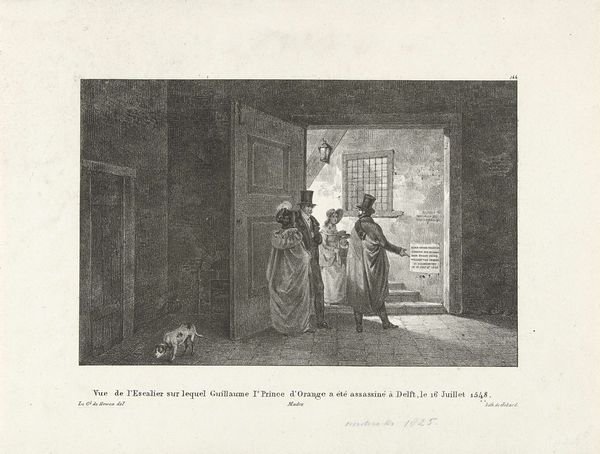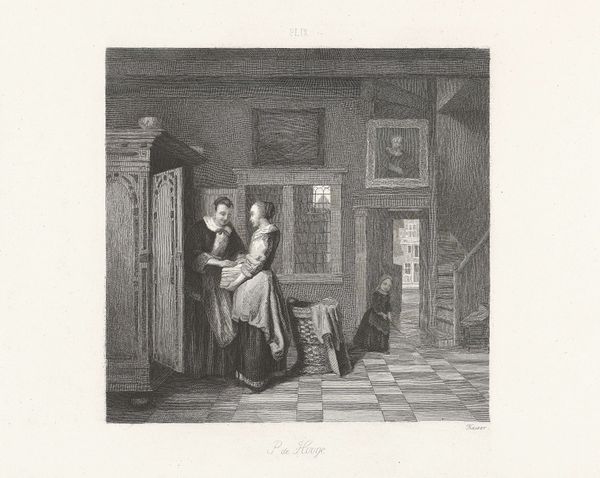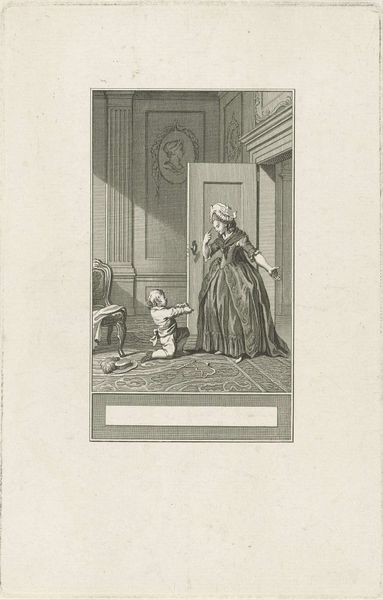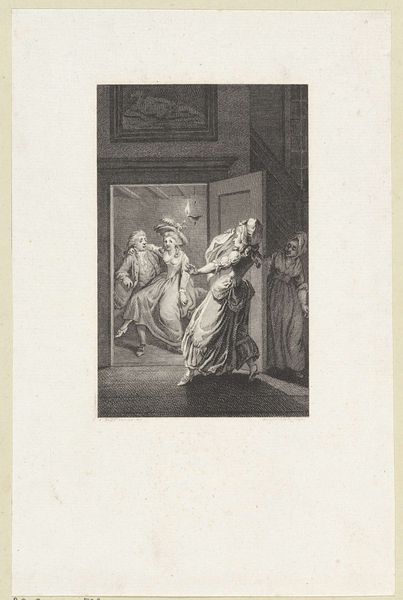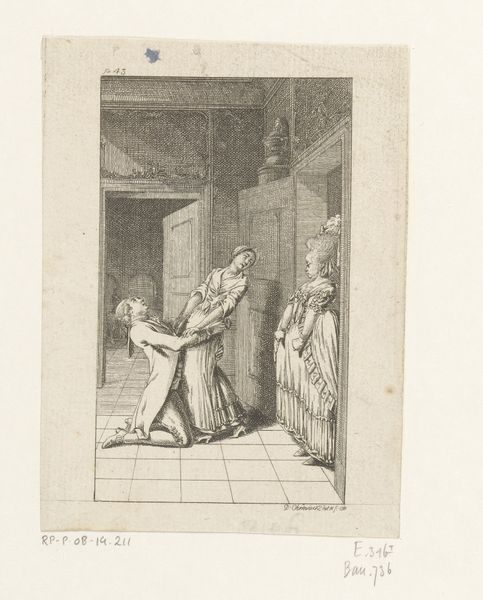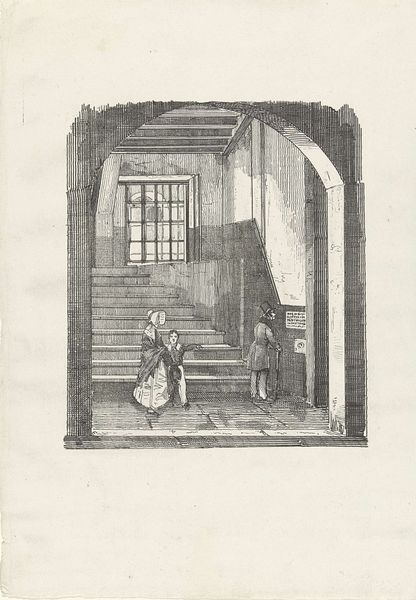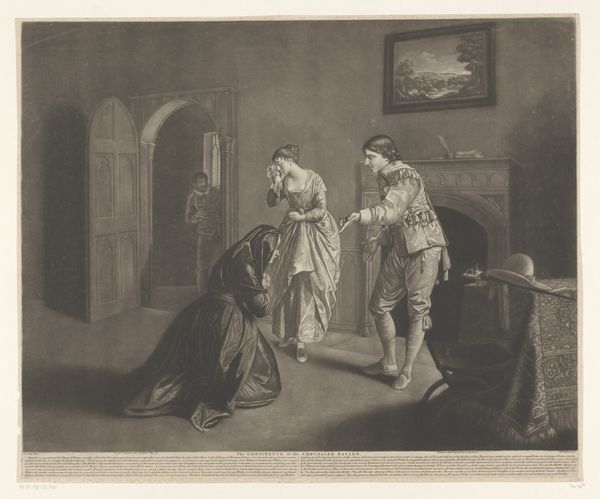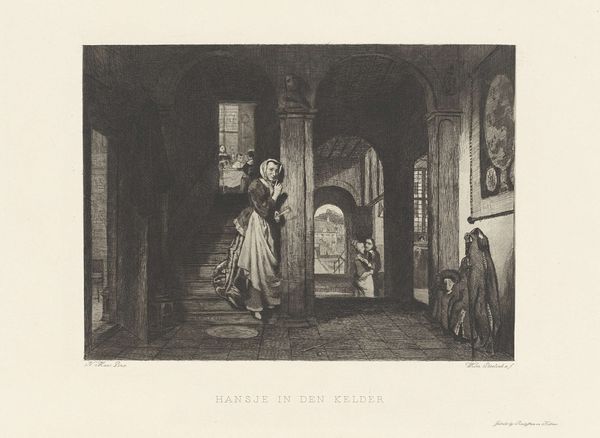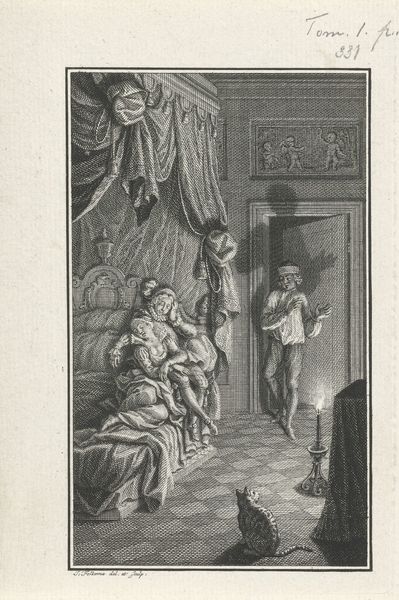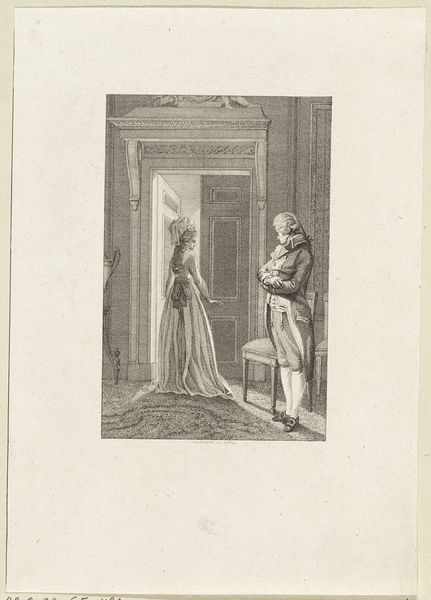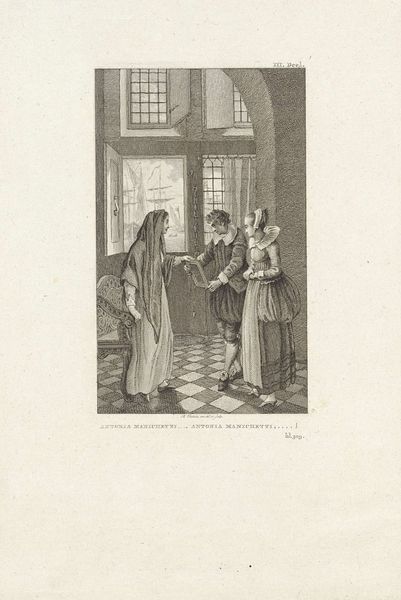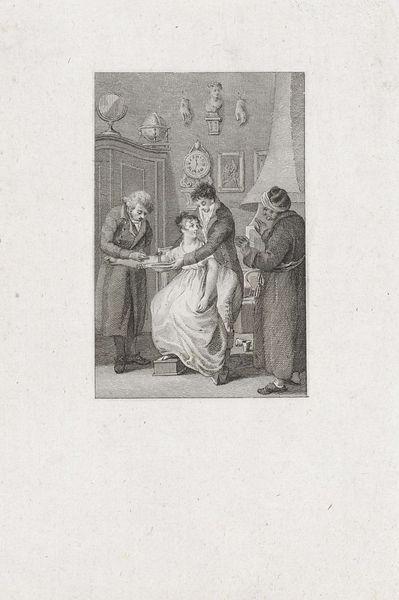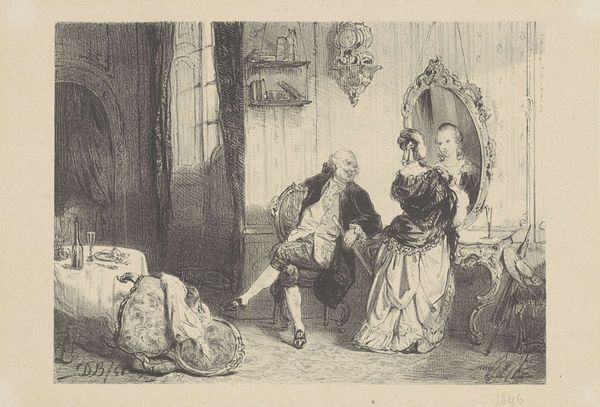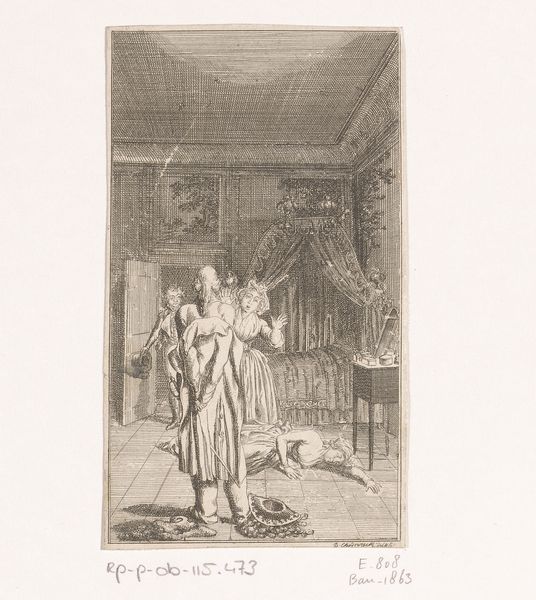
print, etching, engraving
#
narrative-art
#
dutch-golden-age
# print
#
etching
#
old engraving style
#
19th century
#
line
#
genre-painting
#
engraving
#
realism
Dimensions: height 172 mm, width 216 mm
Copyright: Rijks Museum: Open Domain
Curator: Welcome. Let's discuss "Luistervink", an engraving by Johann Wilhelm Kaiser I, dating from between 1823 and 1900, held here at the Rijksmuseum. What strikes you first? Editor: There's an immediate sense of theatricality! A single female figure takes centre stage. We observe this woman as she keenly listens and subtly smiles, peeking around a sturdy support column at the bottom of a flight of steps, with a furtive gesture asking us to do the same. I sense something subversive at play, breaking social codes for women to not participate in conversations without being asked to. Curator: Absolutely. It presents a fantastic insight into domestic life of the time, the very structures that govern women in these domestic situations. What appears, at a surface level, to be mere nosiness, in fact underscores how information flowed, particularly for those often excluded from formal power structures. We can question what the implications are when considering female identity within those strict boundaries. What narratives emerge? Editor: I am struck by that question, but how the architecture plays into the social dynamic! Look how the arches frame each glimpse of what seems like different social tiers—the servants near the staircase, the domestic partnership that can just be viewed, a gathering around a dining table in the back room upstairs, implying varied social roles. This etching is more than a static portrait, in fact, is this a reflection on voyeurism? Is there an element of danger, especially for the figure in the forefront? Curator: Intriguing points. Considering its circulation, and its themes, there's a public dimension too. Prints like this entered homes, disseminating narratives and perhaps subtly shaping or reflecting societal values. Are they critical of, or complicit in, the social arrangements they depict? The power of the image isn’t simply in its content, but in its agency to shape a public sensibility. Editor: Indeed. This depiction may be a form of cultural expression that gives agency to members of society that are frequently disempowered in order to subvert traditional ideas around cultural representation. This piece serves as a starting point to think more deeply about our role as spectators as we stand here looking at this piece, who do we see in this composition? Who has the agency to control which part of the narrative? Curator: Yes, looking closer allows a lens into the socio-political sphere of its time through our intersectional understanding. Editor: Thank you. It highlights so much about the artwork itself but reminds us that, when thoughtfully observed, all art can reveal an aspect of the politics and culture that influence social behaviour.
Comments
No comments
Be the first to comment and join the conversation on the ultimate creative platform.
